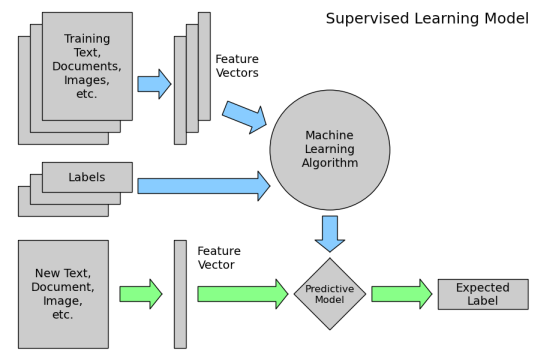Custom AI APIs
Build you own AI models based on your data.
Ready-to-use APIs VS Custom AI APIs
It is very important to distinguish Ready-to-use AI APIs and Custom AI APIs:
-
Trained AI APIs are based on models already trained by AI providers with their databases. These models are usually used to manage common use cases (examples: sentiment analysis, general object detection, translation, speech-to-text, etc.). However, it is always relevant to try these APIs before custom APIs since they are more and more competitive and efficient.
-
For specific use cases where a very high precision is needed, it may be better to use AutoML APIs. These APIs are provided by multiple providers like Google Cloud Platform, Amazon Web Services, Microsoft Azure, IBM Watson, and many others. AutoML APIs allow users to build their own custom model, trained on the user’s database. These models are trained on multiple datasets beforehand by providers.
What Custom AI model can you build?
There are many AI providers that allow you to build custom models. Here is the models you can build:
- Custom Vision: image classification, object detection, face recognition, logo detection, etc.
- Custom Text: text classification, named entity recognition, sentiment analysis, etc.
- Custom Speech: custom speech-to-text
- Custom Translation: custom machine translation
- Custom Document Parsing: custom information extraction from specific documents
- Custom Video Analysis: video classification, object tracking, etc.
How Custom AI APIs work

Create your dataset
The first step will be to create the dataset that will be used to train the model. You will need to import your data (can be text, image, audio, video, pdf, etc.) and assign a label to each data (can be a class, an entity, a sentiment, a bounding box, etc.).
Train your model
Once the dataset is ready, you will just have to launch the training. Many parameters can be modified depending on the custom API used: time of training, column ponderation, target column, optimization metric, etc..
Model evaluation
Once the training is finished, you will be able to access to some metrics that indicates how the model is performing: accuracy, recall, precision, confusion matrix, etc..
Make predictions
Finally, you can access to your custom AI model through an API endpoints to perform prediction with new data.
Updated 8 months ago
